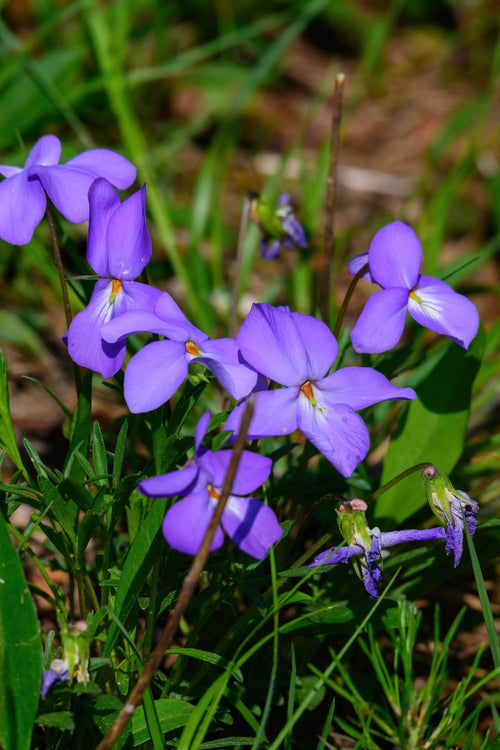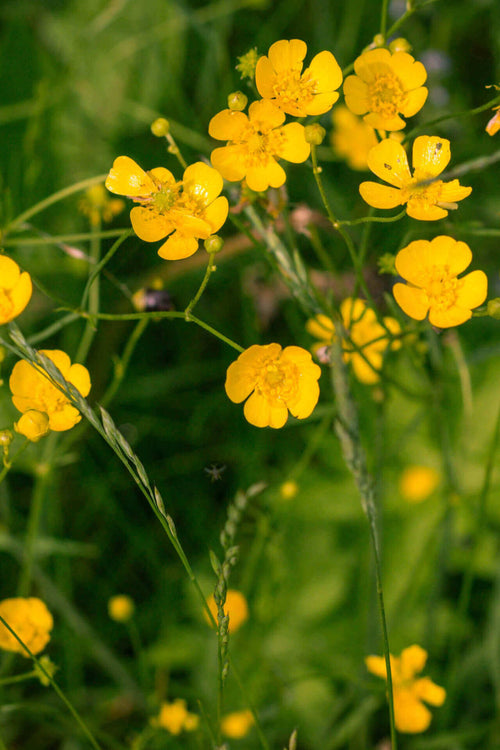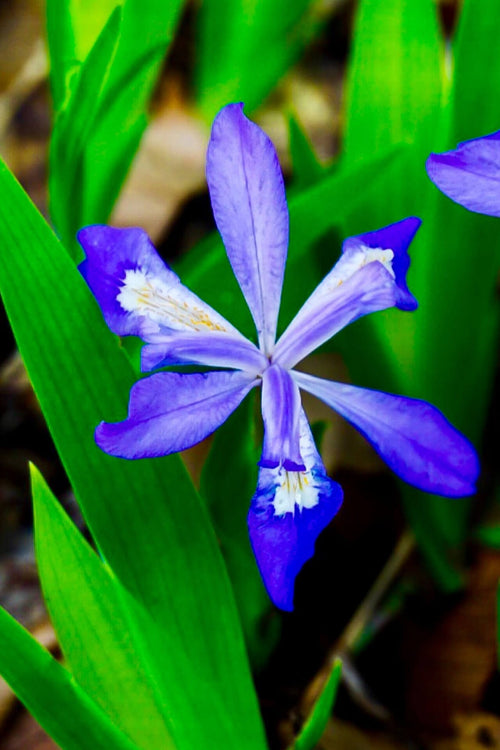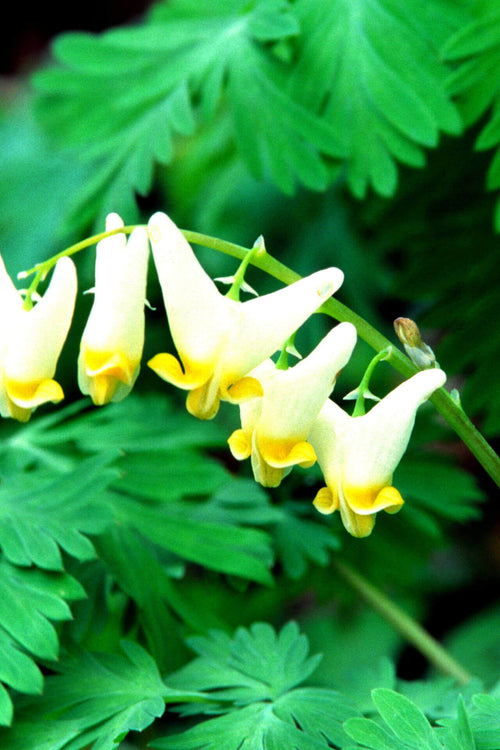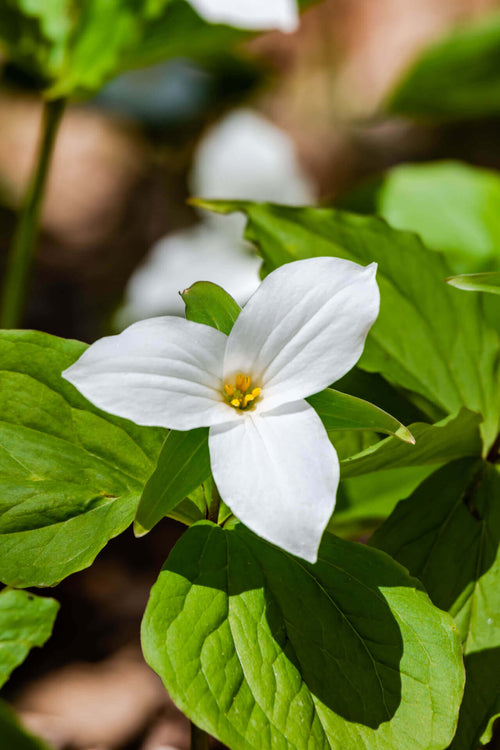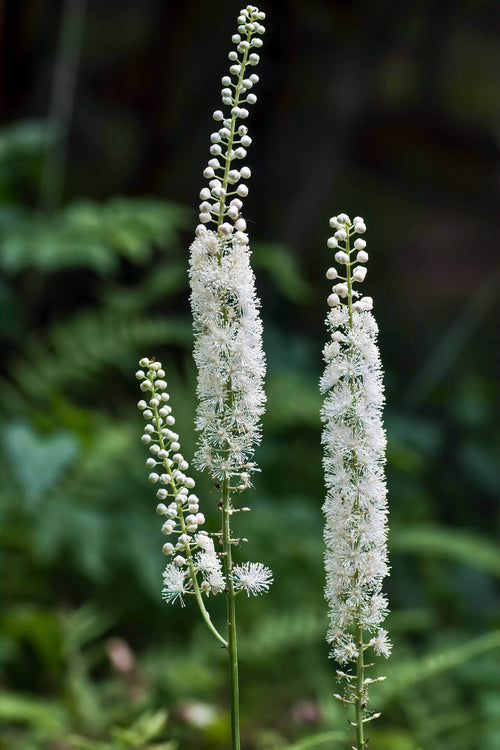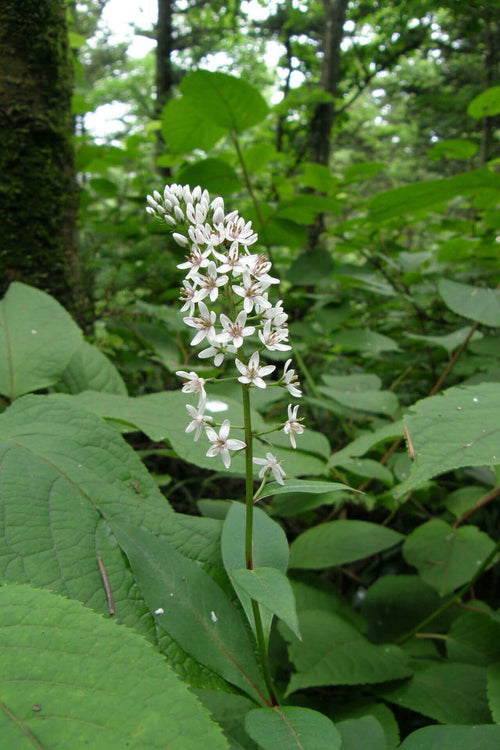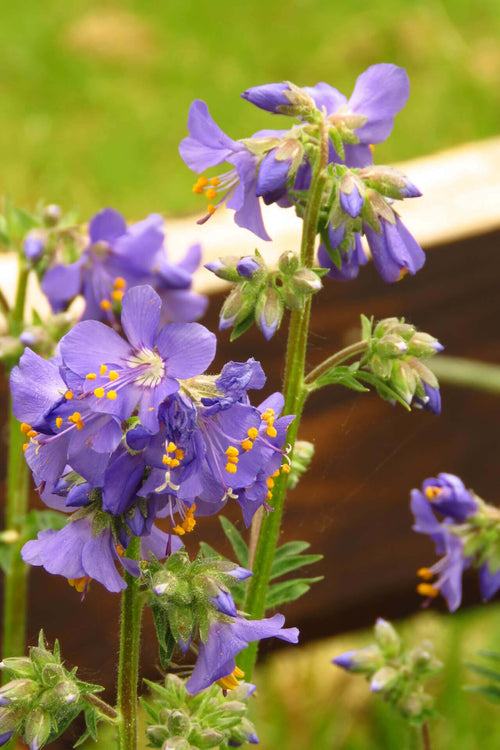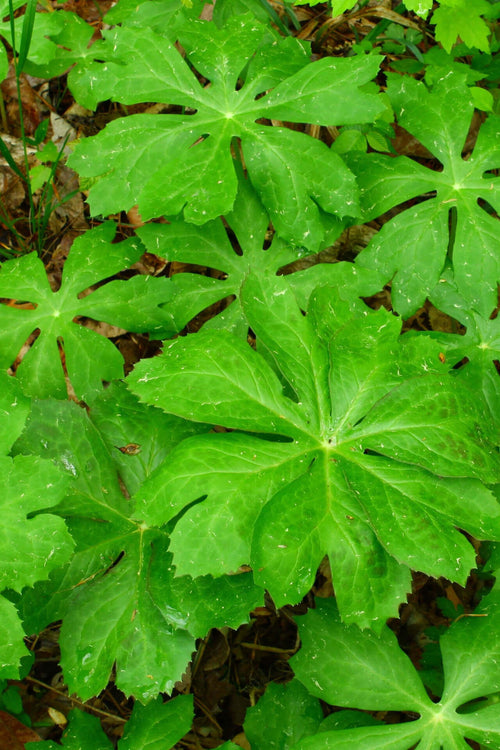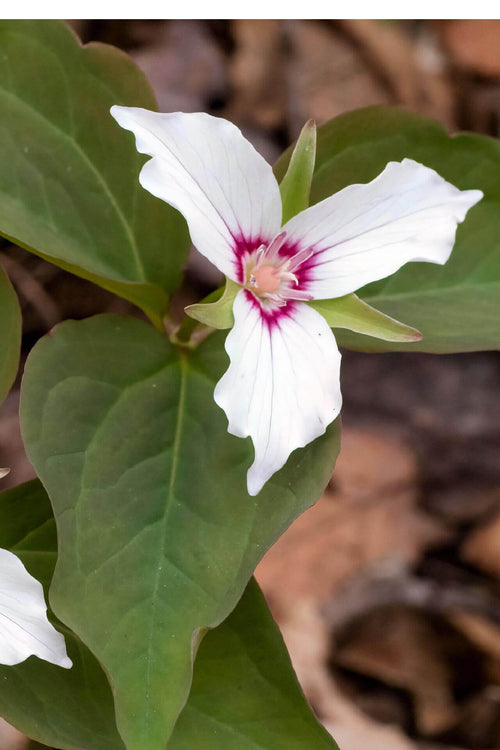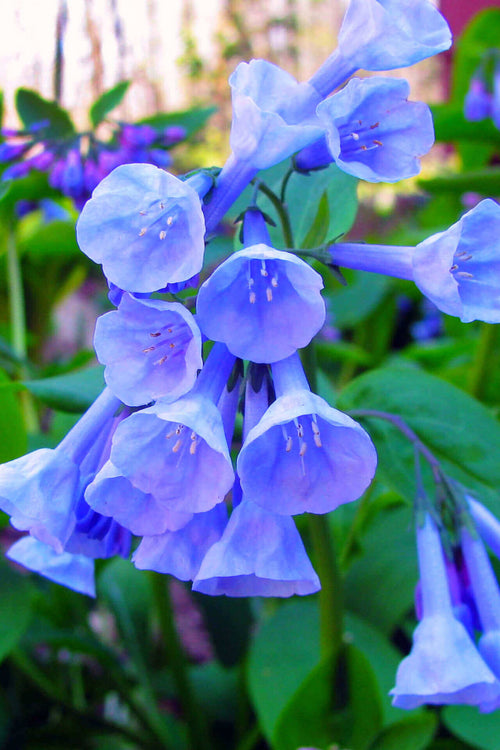What is the difference between full sun and full shade?
Full sun in a garden means that the area has sun for the greater majority of the day. Full sun spots are likely to be south-facing.
Full shade in a garden means that the area does not receive sunlight for all or the majority of the day. These spots in the garden may be blocked by buildings or trees and shrubs. Full-shade spots are most often north-facing.
What is the difference between part sun and part shade?
This is where things get a little dicey. I know what you may be thinking: part sun and part shade, aren't they the same thing? To be honest, they are very similar.
Part sun means a plant should receive around 4-6 hours of sun a day. Part shade means that a plant should receive around 4-6 hours of shade a day. Many plants do best in this range.
What kinds of gardens have shade?
Most gardens have shade in one form or another. Whether it be from tall trees, buildings, or other tall plants, shade is a part of almost every garden.
Some gardens are designed to be heavily shaded. The prime examples of this are woodland gardens.
Woodland gardens are exactly what they sound like gardens made in woodlands. Because of such heavy tree cover, woodland gardens are mostly shaded. They create a unique challenge for a gardener but can result in breathtaking and magical outcomes.
Can I grow anything in the shade?
No, not everything can be grown in the shade. But there are hundreds of shade-loving plants that can thrive in the least sunny conditions. Though they can sometimes be tricky to find, there are countless plant options for shade gardens.
Can I have a beautiful garden even though it has full shade?
You can have a beautiful garden even if it's shaded. Just because your space lacks sun doesn't mean you have to sacrifice beauty and appeal. Many gorgeous plants grow exclusively in the shade and can transform your outdoor space into something wonderful for you to enjoy.
What can I plant in part shade?
Many plants can tolerate partial sun but prefer shade. Here is a list of 6 shade tolerant perennials:
Bird’s Foot Violet
The bird's foot violet is a shade-tolerant perennial that grows low to the ground. It can make an excellent container plant and is easy to grow. This low-maintenance perennial is a must-have for any violet enthusiast with a shaded garden.
Zones: 4 to 8
Sun exposure: Full sun or part shade
Mature height: up to 6 inches
Water: average
Best for woodland edges, in front of borders and containers
Bluets
Bluets are delicate plants that thrive with moderate amounts of sun. This shade-tolerant perennial has many tiny, blue flowers that bloom for a long period. This plant looks great in containers and gardens alike.
Zones: 3 to 8
Sun exposure: Part sun to part shade
Mature height: up to 6 inches
Water: Dry to average
Best for from of borders, woodland gardens, edges, and containers
Creeping Buttercup
The creeping buttercup is a nostalgic shade-tolerant perennial. In addition to being ideal for woodland gardens, this plant can add brightness in shaded settings. Creeping buttercup is a lovely, yet sturdy plant that's low (and oftentimes no) maintenance.
Zones: 3 to 9
Sun exposure: Full sun or part shade
Mature height: up to 10 inches
Water: Average
Best for woodlands, borders, or as a groundcover
Dwarf Crested Iris
The Dwarf crested iris is a shade-tolerant perennial that brings an otherworldly element to shaded gardens. Its distinct blooms stand out against dark green foliage making any passerby want to stop and take a look.
Zones: 3 to 9
Sun exposure: Full sun to part shade
Mature height: up to 10 inches
Water: Average
Best for woodlands, borders, and containers
Dutchman's Breeches
Dutchman's breeches have the most unusual flowers and have been likened to a colonial Dutchman's breeches. They grow well in part shade and can tolerate a range of soil types. Plus, they are easy to grow.
Zones: 3 to 7
Sun exposure: Full sun or part shade
Mature height: up to 12 inches
Water: Average to moist
Best for woodland gardens, borders, and containers
Great White Trillium
Great white trillium is a flower with uncommon blooms. They thrive in shaded conditions and are low-maintenance. In addition to attracting beneficial insects, this shade-tolerant perennial fits many different garden styles.
Zones: 3 to 9
Sun exposure: Full sun or part shade
Mature height: in ideal conditions, up to 2 feet
Water: average
Best for woodland gardens, shade gardens, containers, and borders
What can I plant in full shade?
Many plants thrive with virtually no sunlight at all. They have adapted to low-light conditions and will wilt in the full sun.
Without further ado, here is a list of 7 shade tolerant perennials:
Black Cohosh
Black cohosh is a shade-tolerant perennial that is most often grown in the backs of borders due to its height. It can bring an aura of mystery to a woodland garden by serving as a screen. It is easy to grow and low maintenance.
Zones: 4 to 9
Sun exposure: Full shade
Mature height: up to 6 feet
Water: Average
Best for woodland gardens and shaded gardens
Foam Flower
Foam flower is a shade-tolerant perennial that thrives in complete shade. It is grown in woodland gardens and is admired for its fuzzy bristle-like flowers.
Zones: 3 to 8
Sun exposure: Full shade
Mature height: up to 2 feet
Water: Average
Best for the middle of borders, woodland gardens, and shaded gardens
Jacob’s ladder
This shade-tolerant perennial does best in the shadiest spots of the garden. Growers of Jacob's ladder will be rewarded with beautiful purple blossoms. Their blooms are great at brightening up darkened areas of the garden.
Zones: 3 to 8
Sun exposure: Full shade
Mature height: up to 3 feet
Water: Average to moist
Best for woodland gardens and alpine gardens
Mayapple
Mayapple is a shade-tolerant perennial that has unusual umbrella-like foliage. Best of all, its flowers peek out from under the foliage. It can be fun for children to hunch down and try to spot its elusive blooms.
Zones: 3 to 8
Sun exposure: Full shade
Mature height: 1½-2 inch long
Water: Average to moist
Best for woodland gardens, shaded gardens, and alpine gardens
Painted Trillium
The painted trillium is a sweet, delicate shade tolerant perennial with blooms that look like they have been painted. Small, but mighty, this perennial thrives in full shade and is easy to grow.
Zones: 3 to 9
Sun exposure: Full shade
Mature height: up to 8 inches
Water: Average
Best for woodland gardens, alpine gardens, containers, and shaded borders
Twinleaf
This shade-tolerant perennial is almost too good to be true. Twinleaf forms mounds of foliage from which flowers bloom. Its tiny, white flowers will bring a light and airy vibe to any woodland garden.
Zones: 5 to 7
Sun exposure: Full shade
Mature height: up to 8 inches
Water: Average to moist
Best for woodland gardens, front of borders, edges, and containers
Virginia Bluebells
Virginia bluebells are one of the most beautiful shade-tolerant perennials on this list. Their true blue blooms thrive in full shade making them the perfect fit for a shady spot in a cottage garden. Plus, pollinators love them.
Zones: 3 to 8
Sun exposure: Full shade
Water: Average to moist
Mature height: 18-24 inches
Best for cottage gardens and borders
Visit our online shop for a wide selection of plants and trees, or come say hi at our store location in Tennessee!
We offer fast shipping nationwide so you can start transforming your garden today! If you have any questions about perennials or any other plant needs, don’t hesitate to contact us at customerservice@tennesseewholesalenursery.com, we’d love to hear from you!

